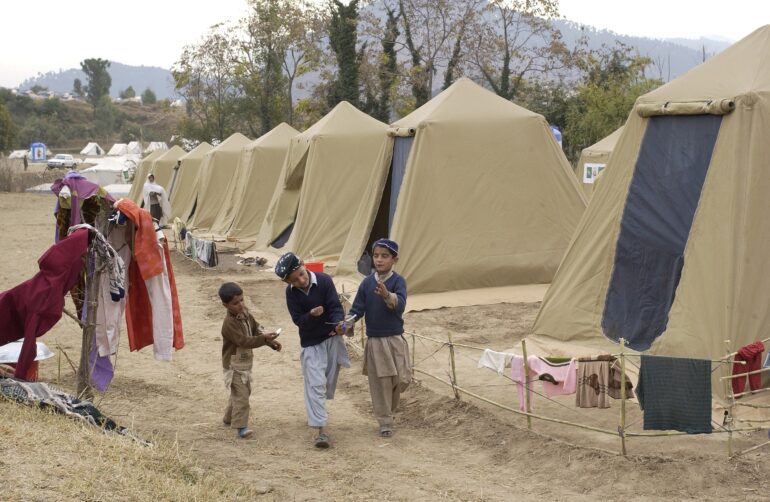TL;DR:
- GeoMatch, a machine learning tool, enhances refugee placement by matching them with communities where they’re likely to thrive.
- Dominik Rothenhaeusler, an assistant professor at Stanford University, collaborated with the Stanford Immigration Policy Lab (IPL) on this project.
- The algorithm considers various individual characteristics and measures employment success after specific timeframes.
- GeoMatch significantly increased projected employment rates by approximately 40% in the U.S. and 75% in Switzerland.
- Partnerships with U.S. refugee resettlement organizations and the Swiss government have further expanded the project’s impact.
- The algorithm provides recommendations but requires human oversight to ensure fairness and avoid bias.
- GeoMatch aims to expand globally and assist economic immigrants in addition to refugees.
Main AI News:
In today’s fast-paced world, where technological advancements are reshaping the way we approach complex challenges, the humanitarian sector is no exception. Dominik Rothenhaeusler, an assistant professor of statistics at Stanford University, witnessed the evolving landscape of refugee resettlement while growing up in Oberzell, Germany. In recent years, this small town, like many others across Germany, has welcomed asylum seekers and refugees from various parts of the world, each seeking a new beginning and a chance at a better life.
The Oberzell community rallied together to support these newcomers, with volunteers dedicating their time to teach basic German, help refugees navigate the intricacies of public transportation, and provide much-needed guidance in navigating bureaucratic hurdles. Rothenhaeusler, however, found himself somewhat removed from this effort as he pursued his academic journey, first completing his Ph.D. in Zurich and then his postdoc at Berkeley. Nevertheless, he was eager to contribute in a meaningful way.
Rothenhaeusler’s opportunity came when the Stanford Immigration Policy Lab (IPL) approached him to collaborate on a groundbreaking project known as GeoMatch. This project leverages the power of machine learning to assist placement officers in matching refugees with communities where they are most likely to thrive—a crucial step in their successful integration.
GeoMatch emerged from a crucial realization: placement officers faced significant challenges in their work, relying heavily on intuition and experience to determine suitable destinations for refugees. Despite the wealth of data available in management and administrative systems, this information was often underutilized. The IPL team, led by Jens Hainmueller, decided to bridge this gap by creating an algorithm that would revolutionize refugee placement.
The algorithm, initially designed for refugee placement in the U.S. and Switzerland, takes into account a wide range of individual background characteristics such as country of origin, language skills, age, and gender. It also considers the timing of a refugee’s arrival and their assigned location, with employment success after 90 days in the U.S. and three years in Switzerland as the key performance indicators.
The impact of GeoMatch has been nothing short of transformative. By applying the algorithm, projected employment rates increased by approximately 40% in the U.S. and an astounding 75% in Switzerland. These results, published in Science in 2018, offer a glimmer of hope for the millions of refugees worldwide seeking stability and prosperity.
The journey didn’t stop there. GeoMatch’s success prompted partnerships with refugee resettlement organizations in the U.S., which receive substantial funding from federal agencies. In 2020, these organizations began exploring how GeoMatch could enhance their operations, but the COVID-19 pandemic temporarily halted progress. In 2022, collaboration resumed, promising further positive impacts on refugee placement.
Additionally, GeoMatch embarked on a pioneering partnership with the Swiss government. Since 2020, Switzerland has been using GeoMatch to assist in the placement of refugees throughout the country. This partnership incorporates a rigorous impact evaluation to ensure that the tool achieves its intended effects. The ongoing GeoMatch pilot in Switzerland aims to optimize employment prospects for asylum seekers, ultimately contributing to more successful integration.
GeoMatch recommendations are provided to placement officers, offering valuable insights while ensuring that existing allocation quotas are maintained. This innovative approach not only facilitates refugees’ integration into new economies but also eases the administrative burden on host countries, simplifying the process of gathering information and making connections.
However, automation in such a critical process raises concerns about bias and the need for human oversight. GeoMatch acknowledges the importance of human decision-makers in the placement process, with the algorithm serving as a supportive tool rather than a replacement. The team has also taken proactive measures to address bias, offering flexibility to resettlement agencies to customize algorithms to ensure fair outcomes for various subgroups.
As GeoMatch continues to evolve, it aims to expand its reach to more countries and populations, including economic immigrants. The goal is clear: to make the world a better place by improving the well-being of refugees and migrants, one placement at a time.
In a world grappling with the complexities of forced migration, GeoMatch stands as a beacon of hope—a testament to the potential of technology and human ingenuity to create positive change for the most vulnerable among us. The journey is just beginning, and as Jens Hainmueller puts it, “The countries we’re working with today are just the beginning.”
Conclusion:
The GeoMatch project showcases the potential of machine learning to improve refugee placement and integration. Its success has far-reaching implications for the humanitarian market, offering efficient and data-driven solutions for refugee resettlement organizations. As the project expands its reach, it has the potential to revolutionize the way countries worldwide approach the challenges of forced migration, benefiting both refugees and host nations.

